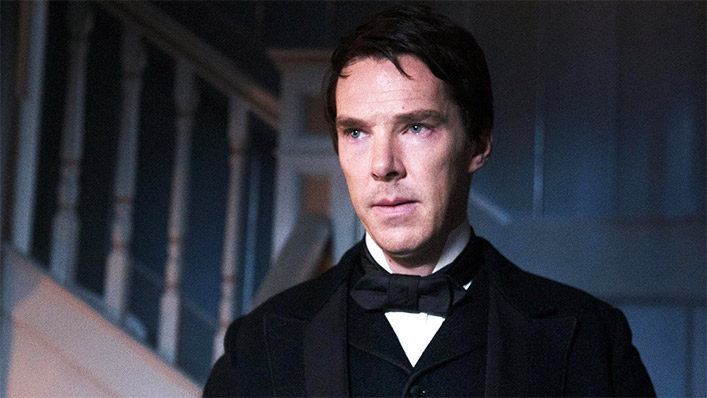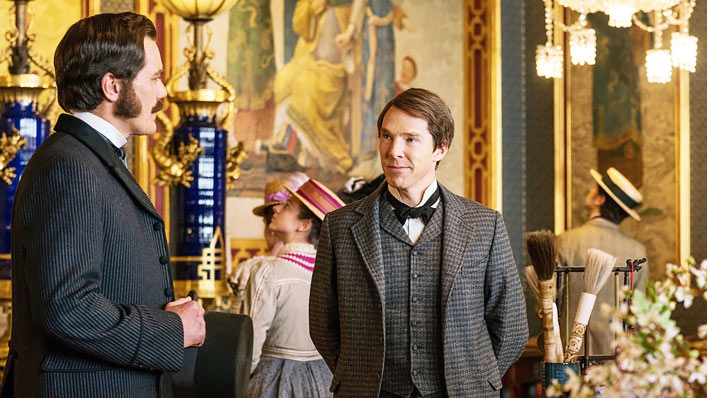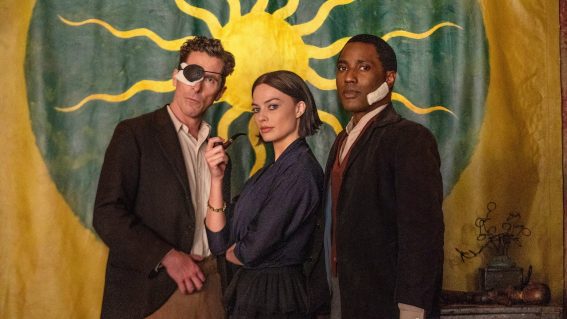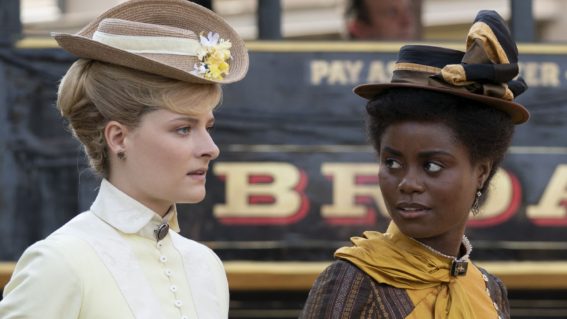The Current War is a period drama brimming with weird energy

Benedict Cumberbatch and Michael Shannon star as dueling inventors Thomas Edison and George Westinghouse in The Current War. It’s an interesting but inconsistent film, writes critic Luke Buckmaster, with an erratic visual style that’s sometimes jarring and sometimes compelling.
Periods of great technological innovation are always historical occasions in which inventors young and old, poor and wealthy, male and female, extroverted and introverted, hopeful and pessimistic, bald and endowed with hair push aside their egos to work as one for the collective benefit of all humankind – said nobody, ever.
Director Alfonso Gomez-Rejon’s period drama The Current War, which was presumably pitched as “The Prestige but with inventors instead of magicians,” is based in America circa 1880. The years during and around the turn of the century would have been an amazing time to be alive: when electricity, the radio, the cinema, the airplane were invented; when the golden era of magic was in full swing; when ordinary people held extremely high standards on all matters pertaining to hats and facial hair.
That is the not the same as saying I would want to be a character in The Current War; at least not one of the leads. The electricity-inventing business looks like a tough gig, to be sure, with too many dials and knobs and wires for my liking – and too many conversations about “AC” and “DC” that do not involve taking highways to hell and rocking out.
The version of The Current War arriving in Australian cinemas is the director’s cut, which, for what it’s worth, was better received by critics than the original theatrical version released in the US – the former receiving a 60% approval rating on Rotten Tomatoes versus 31% for the latter. The production’s journey has not been smooth, being caught up in the downfall of Harvey Weinstein. The formal studio mogul (recently sentenced to 23 years in prison for rape and sexual assault) was a co-producer of the film, which was put on the shelf and sold off in 2017.
Early moments include a striking outdoor image capturing celebrity inventor Thomas Edision (Benedict Cumberbatch) at the centre of a circular arrangement of lightbulbs placed on sticks in a field, establishing that this guy understands the importance of delivering financiers a little bit of razzle dazzle. “I hope you brought your cheque books!” he tells potential investors, brimming with braggadocio.
A more sedate and sensible salesperson – at least according to Michael Mitnick’s script, which is keen to paint dueling inventors as chalk-and-cheese personalities – is George Westinghouse. The influential historical figure whose name is synonymous with household appliances is, of course, played by a 680 litre fridge with a stainless steel finish and one of those nifty water dispensers. Actually this Westinghouse is played by Michael Shannon, whose typically morose performance style is chilling in some respects (icy cold when he’s calm) and scorchingly hot in others (with, when he’s angry, a boiling glare reminiscent of Superman’s laser eyes).
Westinghouse believes the form of electricity he is producing, Alternating Current (AC) power, is superior to what Edison is producing – Direct Current (DC) power, which the other inventor insists is a safer option. They scurry to build their respective inventions while engaging in a PR war. Croatia-born American immigrant Nikola Tesla (Nicholas Hoult) is a kind of narrative third wheel, thrown into Edison and Westinghouse’s rivalry without much time spent developing his character.

The film’s visual structure is unusual and uneven from the get-go, with off-centre framing and little continuity between cinematographer Wally Pfister’s images – which jump between extreme close-ups, mid-shots, POV shots and other compositions crafted with an air of erraticism. Edited by Lee Smith in ways that cut scenes short before they’ve had a chance to breathe, the approach is often jarring and undermines Gomez-Rejon’s most interesting creations. For example, a Wes Anderson-like long shot capturing factory workers toiling away in multiple rooms, one side of the factory wall removed so the viewer can observe the totality of this diorama-esque layout.
In the film’s most interesting sequence, the director parallel cuts between two starkly different uses for AC electricity: one to power a world fair and the other an electric chair, recreating the final moments of the first person to die by electrocution. This is, if you’ll forgive the wording, an electrifying moment, the director making a point that people dying while creating a new technology is one thing; the deliberate use of that technology for the purposes of killing quite another.
The Current War is at its most compelling when it deviates from the path of ‘dueling men in cutthroat competition’ to embrace bolder and pricklier ideas. Gomez-Rejon makes interesting connections, though they tend to fizzle out pretty quick – as if the film itself is short-circuiting.

















